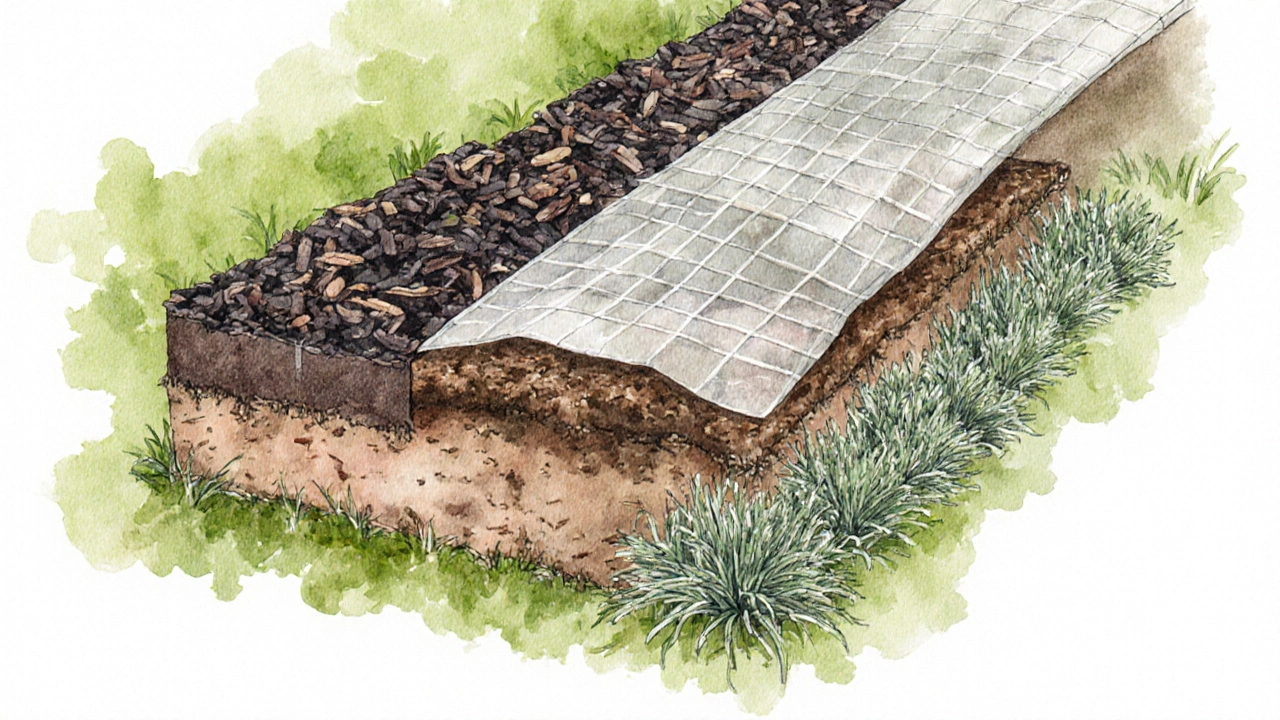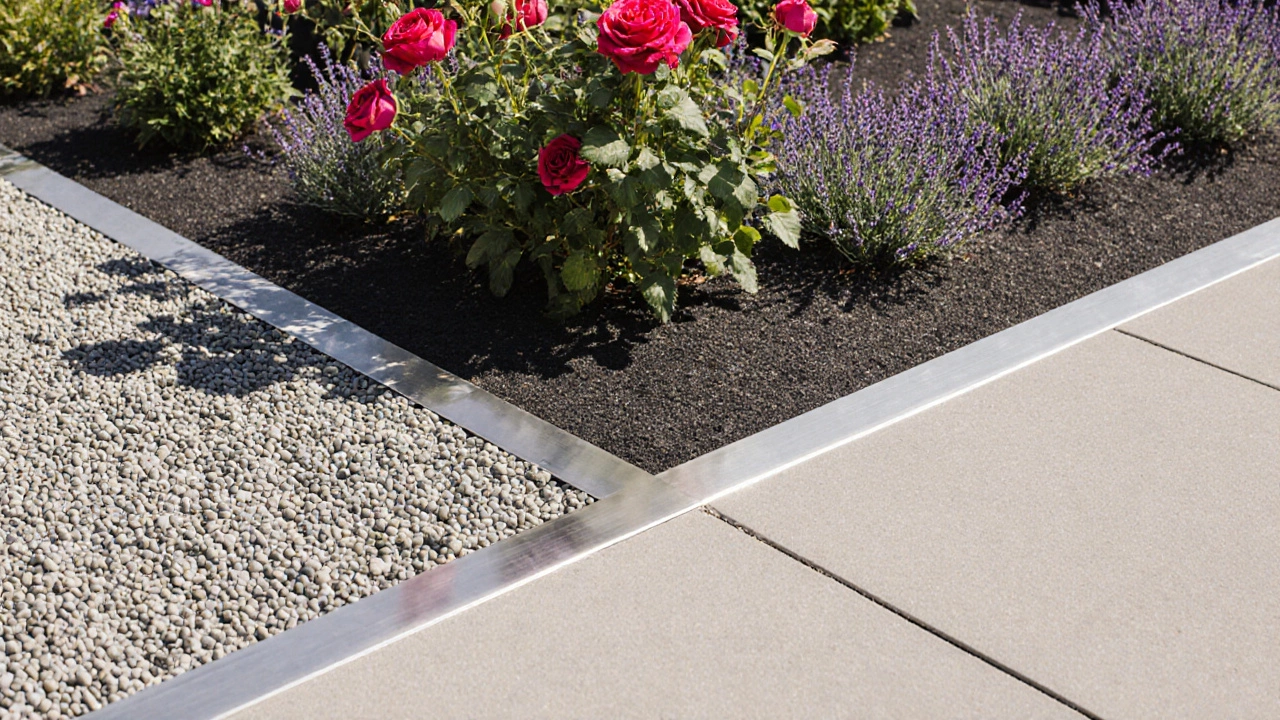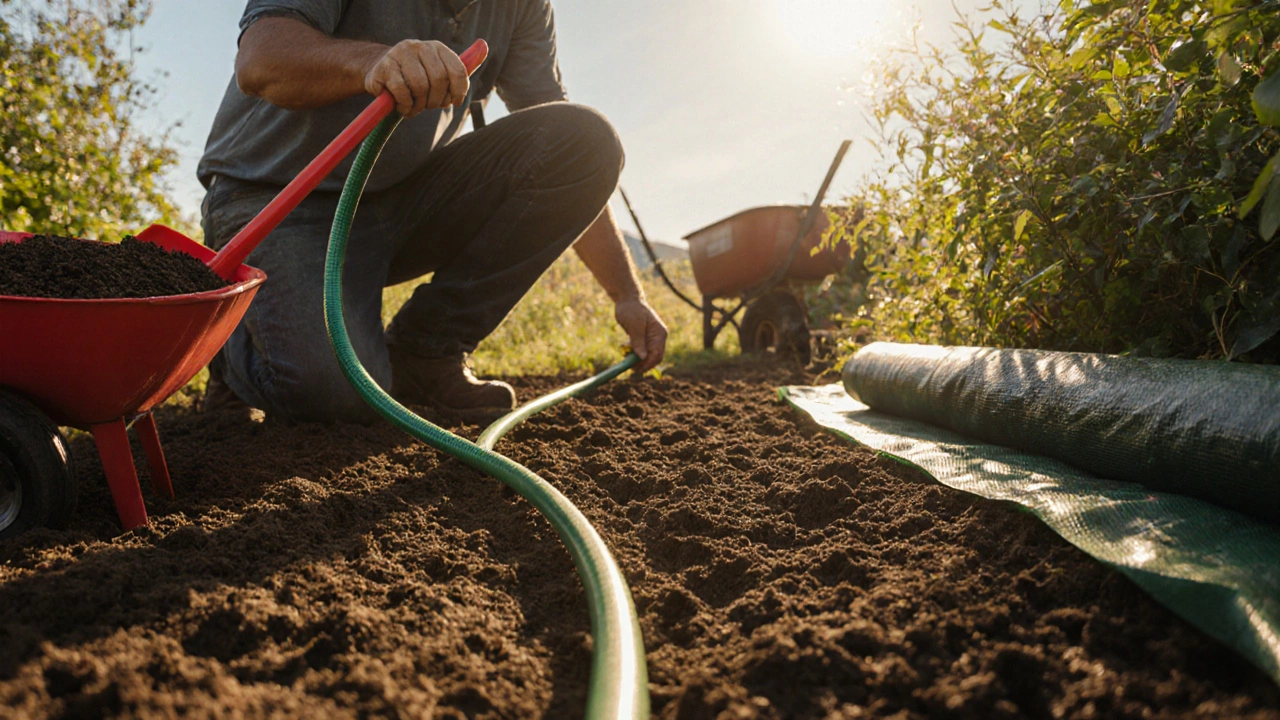Weed-Free Flower Bed Cost Estimator
Calculate Your Weed Control Costs
Estimate the materials needed for your flower bed to stay weed-free. Enter your bed's dimensions and select your preferred weed control solutions.
When a client wants a tidy, blooming flower bed that stays weed‑free all season, landscapers reach for a handful of tried‑and‑true tools. Below is the full toolbox, from the humble mulch layer to high‑tech landscape fabric, and how each one helps you keep unwanted shoots at bay.
Why weeds pop up in flower beds
First, a quick reality check: weeds aren’t magic. They thrive on loose soil, moisture, and light - the same conditions you give your roses and tulips. A bare patch of soil is a welcome landing strip for seed heads drifting in on the wind. Understanding that basic need lets you cut off the supply line before the problem even starts.
Landscape fabric: the invisible shield
Landscape fabric is a woven or non‑woven geotextile sheet designed to block light while still allowing water and air to pass through. It’s the go‑to weed control material for most pros because it creates a physical barrier that old‑fashioned hand weeding can’t easily breach. Install it under a thin layer of mulch and you’ll see a dramatic drop in weed emergence within weeks.
- Cut the fabric to fit the bed shape, leaving a few inches over the edge for a neat tuck‑under.
- Secure with landscape pins or staples every 12‑18 inches.
- Overlap seams by at least 6 inches to avoid gaps.
Pro tip: choose a UV‑stabilised version. Lower‑grade fabrics can degrade in a season, letting weeds sneak back in.
Mulch: more than just a pretty topping
Mulch is any organic or inorganic material spread over soil to conserve moisture, regulate temperature, and suppress weeds. While many homeowners think any mulch will do, the type you pick influences how well it blocks weeds.
Organic mulches - shredded bark, leaf mold, composted yard waste - break down over time, enriching the soil. Inorganic options - rubber mulch, stone pea gravel, or even decorative glass - last longer but offer less soil nutrition.
Apply a 2‑3 inch depth for organic mulches and 3‑4 inch for inorganic. Too thin, and light reaches the seed bank; too thick, and you risk water‑logging.
Pre‑emergent herbicides: chemical early‑bird control
Pre‑emergent herbicide is a chemical barrier applied to soil before weeds germinate, stopping seedlings from taking hold. Professionals use it sparingly in high‑traffic beds where fabric or mulch can’t cover every crevice. Follow label rates - overdosing can harm desirable plants.
Typical application windows: early spring (March‑April in the UK) and early autumn (September). Pair it with a light mulch layer to keep rain from washing the granules away.

Edging: sealing the borders
Edging refers to any physical barrier-metal, plastic, stone, or brick-installed around the perimeter of a flower bed. A solid edge prevents grass and weeds from creeping in from the lawn.
- Metal or poly‑edge strips are easy to install and flexible for curved beds.
- Stone or brick edging adds a decorative touch while staying functional.
- Make sure the edge sits a few centimeters below soil level to block root intrusion.
Even the best fabric can be undermined by a sloppy border, so treat edging as an essential part of the weed‑proof system.
Ground‑cover plants: living weed blockers
Ground‑cover plants are low‑growing, spreading species that fill in gaps and outcompete weeds for light and nutrients. Think creeping thyme, sedum, or Armeria (sea‑lavender). When planted around the edges of a bed, they act as a living mulch.
Choose species suited to your soil pH and sun exposure. A dense mat of ground cover can reduce the need for synthetic herbicides by up to 30 % in a typical garden.
Rubber mulch and stone pea gravel: durable inorganic covers
Rubber mulch is recycled tyre material shredded into granules. It’s long‑lasting (10‑15 years), retains moisture well, and stays in place on sloped beds. Its dark colour can warm the soil - a bonus for early‑season planting.
Stone pea gravel is a small, smooth river‑rock aggregate. It offers excellent drainage and a clean, modern look. Both options suppress weeds effectively, though they can be pricier than organic mulch.

Comparison of common weed‑barrier options
| Material | Cost per sq ft (GBP) | Typical lifespan | Weed suppression rating | Aesthetic suitability |
|---|---|---|---|---|
| Landscape fabric | £0.45 | 5‑7 years | High | Neutral - needs mulch cover |
| Organic mulch (bark) | £0.30 | 2‑3 years | Medium‑high | Rich, natural look |
| Rubber mulch | £0.70 | 10‑15 years | High | Industrial / modern |
| Stone pea gravel | £0.60 | 15+ years | High | Clean, formal |
| Pre‑emergent herbicide | £0.10 (per application) | Seasonal | Medium | Invisible |
Step‑by‑step install for a weed‑free flower bed
- Mark the bed outline with a garden hose or string.
- Excavate to a depth of 10‑12 cm, removing any existing weeds.
- Lay a 2‑inch layer of coarse compost to improve soil structure.
- Spread landscape fabric, trimming to fit and overlapping seams.
- Secure the fabric with landscape pins every foot.
- Apply a pre‑emergent herbicide if the site has a history of aggressive weeds.
- Lay your chosen mulch or inorganic cover to the recommended depth.
- Install edging around the perimeter, tucking fabric underneath.
- Plant your flowers, allowing enough space for mature spread.
- Water thoroughly and add a light top‑dressing of mulch after planting.
Following these steps reduces the labor needed for weeding by up to 80 % over the first year.
Maintenance tips to keep the barrier effective
- Inspect fabric seams after heavy rain - water can force weeds through gaps.
- Refresh mulch annually; it compacts and loses volume over time.
- Remove any weeds that appear on the surface promptly - they can drop seed.
- Re‑apply pre‑emergent herbicide in late summer if you notice a surge of summer weeds.
Regular check‑ups are quick, but they prevent a full‑scale weed invasion later.
Choosing the right combo for your garden style
If you love a natural, cottage‑garden vibe, pair landscape fabric with a thick layer of shredded bark and add a few low‑maintenance ground‑covers like creeping thyme. For a sleek modern patio, go for stone pea gravel over fabric, sealed with stainless‑steel edging. And if you’re on a tight budget but need durability, a simple mix of landscape fabric and inexpensive pine bark mulch does the trick.
Do I need both landscape fabric and mulch?
Landscape fabric blocks light, but it looks bare on its own. Mulch hides the fabric, adds visual appeal, and helps retain moisture. Using both gives the best weed‑suppression and aesthetic result.
Can I reuse landscape fabric after a garden refresh?
If the fabric is still intact and free of tears, you can roll it up, clean off debris, and reuse it. UV‑stable fabrics survive a few seasons; cheaper varieties may need replacement.
What’s the cheapest effective weed barrier?
A simple rolled jute or burlap fabric priced around £0.30 per sq ft, topped with a thin layer of pine bark mulch, offers solid weed control without breaking the bank.
Are pre‑emergent herbicides safe for pets?
Most registered pre‑emergents are low in acute toxicity, but you should keep pets off the treated area until the granules are watered in and the soil is dry, usually a few hours.
How often should I replace mulch?
Organic mulches decompose and need topping up every 1‑2 years. Inorganic options like rubber mulch or stone gravel last a decade or more, so they rarely need replacement.
